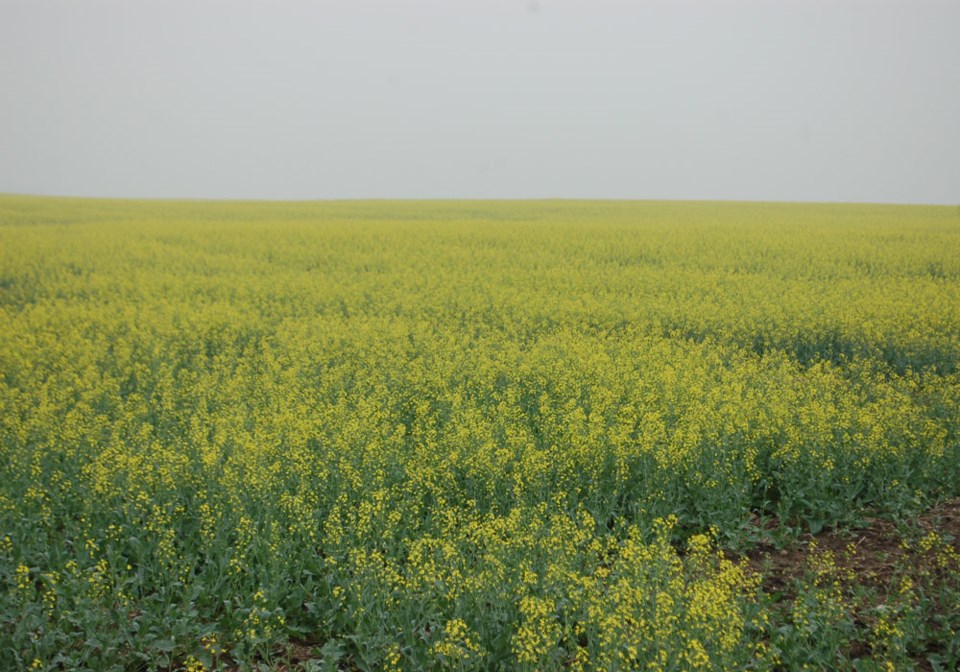While there may be some damage in other sectors of the province, it appears as if southeast Saskatchewan crops are moving along quite well, thank you. There will be, however, a few pockets in the region where rainfall has not been as generous as other areas.
Canola crops, in particular, appear to be doing quite well according to information gathered by Warren Ward, agronomy specialist for the Canola Council of Canada who spoke to the Mercury from his Yorkton office last week.
“I have spoken to a few canola producers in the southeast. I didn’t get any further south than Grenfell and Whitewood last week, but when I contacted the southeast guys, they said their canola is progressing quite nicely. It seems to be more consistent than in other areas of the province. A lot of that was due to the early spring moisture we had in that region.”
Now that it is dry and hot, with some good sprinkling of rain, it’s beginning to pay off.
“Small rains always help, a light rain is not a bad thing and you have had some consistent rains around there,” said Ward.
The insect infestation rate is low, although diamondback moths have been reported, they aren’t in such a volume as to call for a lot of spraying.
“There were a few outbreaks of flea beetles earlier on, but certainly not now,” Ward added.
Instances of the appearance of the bertha armyworm have also been low, but it is best to keep vigilant, said the crop specialist.
On the pasture and hay land front, the most recent provincial crop report suggested that over 32 per cent of the hay crop had been cut and 38 per cent had already been cut and baled or put into silage.
Hay quality is rated as four per cent excellent and 48 per cent good, while 34 per cent is graded fair.
There is still some concern regarding potential hay shortages due to swaths being smaller this year along with limited pasture growth. As a result of this growing concern, the provincial Ministry of Agriculture has a forage, feed and custom service listing for producers to use for advertising their source feed products.
Rainfall over a large portion of the province, two weekends ago, alleviated stress on crops in several regions. Another good rain would help crops fill out to near full potential, said the provincial crop reporters. The amount of rainfall varied significantly, with some sectors receiving only a sprinkle, while others recorded a few inches.
Top soil conditions improved slightly across the province last week with 44 per cent of the cropland moisture conditions being rated as adequate with another 36 per cent still coming in with a “short” rating or very short (19 per cent).
Fall and spring cereals, as well as oilseeds and pulse crops were rated at between 58 to 62 per cent of progressing at a normal rate and normal stages of development, but crop conditions are varying throughout the province.
“But most of the crops are in poor to good condition,” said the crop specialists’ report.
Insects and wheat midge have created a problem in some regions, but not particularly in the southeast.
Sclerotinia is one disease canola growers will be monitoring, said Ward. “But we’re nearing the end of the spraying season anyway, and many producers chose not to spray this year because none of the outbreaks were that serious.” Some of the later seeded crops might benefit from a fungicide, he said, but those would be limited.
“Right now, I’m hearing canola producers are looking for an average to above average crop and harvest should be on schedule. Some re-seeded early in the season and had some challenges so there are a few fields in variable stages of maturity.”
Ward went on to state the best advice he could offer at this stage of the process is for producers to “not jump the gun and start swathing too soon. If you hit the harvest button too early, it can negatively impact yield.”
There is some interest in straight combining of canola crops too, he added. “There will be lots to consider closer to the harvest season, and southern Saskatchewan should have some pretty good options.”




